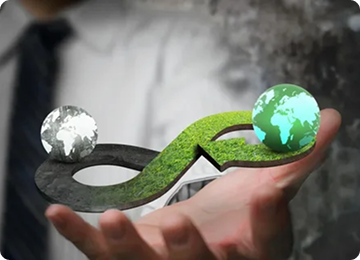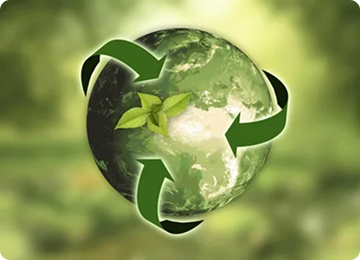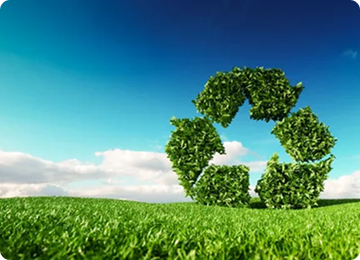Repurpose


Repurpose – Part of the Circular Economy
Repurposing is the use of a product or material for a different function than it was originally produced for. Repurposed materials are often associated with architectural design features and art projects. However, identifying alternative uses for outdated assets will not only save disposal fees but also save material costs spent elsewhere.
By repurposing discarded goods or components and adapting them for another function, the material gets a distinct new use-cycle; however, it can be challenging to scale. The images below show wooden pallets repurposed into a coffee table (from www.homedit.com), old tennis rackets into mirrors and used skateboards into a children’s table (from www.boredpanda.com).



Repurpose – An Economic Function of the Circular Economy
To repurpose something means to adapt or utilize it for a new purpose. This term is often used when talking about objects, materials, or even digital content that is used in a way different from its original intent.
For example, an old ladder could be repurposed as a bookshelf, or a blog post could be repurposed into a podcast episode. The idea behind repurposing is to extend the usefulness of something or to use it in a creative and innovative way.

Circular Systems
It is vital to acknowledge the circular economy is an eco-system and so only selling repurposed items is merely half of a circular system. To complete the circular requires implementing a process where the product or item can be returned into the system for additional use-cycles or at the end of the final use-cycle there is still material value for reprocessing into secondary raw materials for manufacturers to make new products.
To achieve this goal, there must be zero use of toxic chemicals. Careful consideration of the types of paints, glues and binders used is necessary. It is becoming easier to find more environmentally friendly paints, glues, binders and other accessories in stores as sustainability and the circular economy becomes more mainstream.

The Knowledge Centre
Our Knowledge Centre holds an extraordinary amount of information, including research, reports and articles covering more than 50 different topics, including finance, ideas, legal, metrics and monitoring, policy and presentations, as well as images, infographics and movies

Information

Videos


